Results 11,921 to 11,930 of 12091
Thread: Anandtech News
-
10-20-23, 05:28 PM #11921
Anandtech: Zotac's Zbox Pico PI430AJ Uses Frore's AirJet Solid-State Active Cooling
Zotac has introduced the industry's first compact PC featuring Frore's AirJet solid-state cooling system. Zotac's ultra-compact Zbox Pico PI430AJ is powered by Intel's Core i3 processor is designed primarily for everyday home and office computing, as well as applications like digital signage.
As far as specifications are concerned, Zotac's Zbox Pico PI430AJ is a fairly sophisticated machine featuring Intel's eight-core Core i3-N300 CPU, 8 GB of LPDDR5 memory, and an M.2 SSD. For connectivity the PC offers a Wi-Fi 6 + Bluetooth 5.2 adapter, a single GbE port, a USB Type-C port, two USB 3.2 Type-A connectors, and two display outputs (DisplayPort and HDMI).
The Zbox Pico PI430AJ has two major selling points: it is as small as modern smartphones, and it is passively cooled using Frore's AirJet solid-state cooling module, or chip. AirJet's module dissipates heat from electronic components by propelling ultrasonic waves of air across fin-like structures on each chip. This mechanism effectively directs a cool flow of air across the chip's surface area, moving heat away from the silicon components while not collecting dust. Compared to conventional fan cooling methods, AirJet stands out by offering equivalent heat dissipation with enhanced power efficiency and quieter operation. Specifically, each chip can remove 5W of heat, with the capacity to scale up; for instance, two chips can expel 10W.
Zotac's Zbox Pico PI430AJ seems to use two AirJet modules, so they can dissipate up to 10W of power, which should be more or less enough for Intel's Core i3-N300.
Zotac claims that its Zbox Pico PI430AJ Mini PC is now available for purchase in both Windows and barebones versions in select regions (primarily APAC and EMEA, from the looks of things), but is disclosing its recommended pricing.
While Frore's AirJet solid-state active cooling makes a lot of sense for Zbox Pico PI430AJ as it enables it to run faster for longer periods, it should be noted that for Zotac this mini PC is a way to try out the technology in a mass-produced product. That said, if AirJet meets Zotac's expectations for performance, reliability, manufacturability, and costs, expect the company to use it for other PCs as well.
More...
-
10-23-23, 11:43 AM #11922
Anandtech: The Thermaltake Toughpower GF A3 750W PSU Review: Mid-Range 750W PSU With
Thermaltake is a company based in Taiwan that specializes in designing and manufacturing computer hardware components and accessories. Established in 1999, the company's product range includes thermal solutions such as CPU coolers and cases and power supply units, keyboards, and mice. Thermaltake operates globally and has a presence in multiple markets, serving a customer base that ranges from casual computer users to hardware enthusiasts. The company's products are subject to various industry certifications and standards.
Known for its diverse portfolio, ranging from cases and coolers to power supply units (PSUs), the company has a reputation for merging aesthetics with functionality. Among the lineup of their power supplies, the Toughpower GF A3 750W PSU stands as a prominent offering aimed at enthusiasts who demand a balanced mix of reliability, performance, and energy efficiency.
As PSUs are the backbone of any computing system, providing stable and efficient power is paramount. Thermaltake's Toughpower GF A3 750W PSU aims to do just that while adding modularity and aesthetic appeal into the mix. It is designed to target the bulk of advanced PC builders, which means it will also have to compete against myriads of similar products for a piece of that saturated market pie. In this review, we will dissect this power supply's features, performance, and overall value proposition to determine whether it meets modern PC builds' demands.
More...
-
10-24-23, 06:07 PM #11923
Anandtech: Qualcomm Previews Snapdragon X Elite SoC: Oryon CPU Starts in Laptops
While Qualcomm has become wildly successful in the Arm SoC market for Android smartphones, their efforts to parlay that into success in other markets has eluded them so far. The company has produced several generations of chips for Windows-on-Arm laptops, and while each has incrementally improved on matters, it’s not been enough to dislodge a highly dominant Intel. And while the lack of success of Windows-on-Arm is far from solely being Qualcomm’s fault – there’s a lot to be said for the OS and software – silicon has certainly played a part. To make serious inroads on the market, it’s not enough to produce incrementally better chips – Qualcomm needs to make a major leap in performance.
Now, after nearly three years of hard work, Qualcomm is getting ready to do just that. This morning, the company is previewing their upcoming Snapdragon X Elite SoC, their next-generation Arm SoC designed for Windows devices. Based on a brand-new Arm CPU core design from their Nuvia subsidiary dubbed “Oryon”, the Snapdragon X Elite is to be the tip of the iceberg for a new generation of Qualcom SoC designs. Not only is it the heart and soul of Qualcomm’s most important Windows-on-Arm SoC to date, but it will eventually be in smartphones and a whole lot more.
More...
-
10-25-23, 05:44 PM #11924
Anandtech: Qualcomm Snapdragon Tech Summit Live Blog: Compute Spotlight
We're here in sunny Hawaii for day two of Qualcomm's annual Snapdragon Summit.
Yesterday, of course, was the company's prime keynote, where they announced their forthcoming Snapdragon X Elite SoC for laptops, as well as the Snapdragon 8 Gen 3 for smartphones. As well, the company gave us our first look at their Oryon CPU architecture, which will be driving the X Elite, and eventually Qualcomm's smartphones, automotive chips, and more.
For day two of their event, today Qualcomm is going to take us through the technical side of their new chips, revealing a bit more about how they work and what new features and abilities have been added in this generation. So please join us for our live blog coverage of Qualcomm's technical track disclosures.
More...
-
10-25-23, 05:44 PM #11925
Anandtech: Micron and SK hynix Ship LPDDR5-9600 Memory for Next-Gen Smartphones
Fast memory is crucial for the performance of high-end system-on-chips that are getting more sophisticated every year. When it comes to smartphones, the most obvious way to boost memory performance is to push its data transfer rate. Apparently, this is what Micron and SK Hynix are doing with their new LPDDR5X and LPDDR5T DRAMs that boast a data transfer rate of 9.6 GT/s.
Micron's LPDDR5X-9600 memory devices are made on the company's latest 1β (1-beta) process technology. They are offered in up to 16 GB x64 packages (though it is unclear how many actual memory devices these packages integrate). Micron says that its LPDDR5X made on its latest production node boasts up to 30% lower power consumption compared to competing LPDDR5X ICs made on 1α (1-alpha) technology, though this is something to be expected.
Micron does not disclose how it managed to increase the data transfer rate of its LPDDR5X to 9.6 GT/s, which is a 12% increase compared to 8.53 GT/s, which was once considered the highest speed of LPDDR5X memory. The only thing that the company discloses is that these ICs boast 'enhanced' dynamic voltage and frequency scaling, although DVFS is a part of LPDDR5X specification.
"Generative AI is poised to unleash unprecedented productivity, ease of use, and personalization for smartphone users by delivering the power of large language models to flagship mobile phones," said Mark Montierth, corporate vice president and general manager of Micron's Mobile Business Unit. "Micron's 1β LPDDR5X combined with Qualcomm Technologies' AI-optimized Snapdragon 8 Gen 3 Mobile Platform empowers smartphone manufacturers with the next-generation performance and power efficiency essential to enabling revolutionary AI technology at the edge."
SK Hynix is another company to start shipping LPDDR5-9600 memory today, which calls its fastest LPDDR5 DRAMs LPDDR5T (T stands for Turbo). The new memory will be available in 16 GB packages with a VDD voltage range of 1.01V to 1.12V and a VDDQ of 0.5v. By contrast, LPDDR5X should have a maximum VDD voltage of 1.1V, so LPDDR5T is slightly out of LPDDR5X spec.
Meanwhile, both Micron's LPDDR5X-9600 and SK Hynix's LPDDR5T-9600 are compatible with Qualcomm's Snapdragon 8 Gen 3 system-on-chip for smartphones, the two compares announced on Tuesday. Micron is already shipping its 16 GB LPDDR 9.6 GT/s modules featuring a 76.8 GB/s peak bandwidth, so expect some of Qualcomm's partners to use the world's fastest mobile memory shortly. SK Hynix's module has been validated by Micron, so the South Korean company will likely begin commercial shipments of its LPDDR5T-9600 product soon.
"We are thrilled that we have met our customers' needs for the ultra-high performance mobile DRAM with the provision of the LPDDR5T," said Sungsoo Ryu, head of DRAM Product Planning at SK Hynix.
Sources: Micron, SK Hynix
More...
-
10-26-23, 09:45 AM #11926
Anandtech: Solidigm Lays Off Employees Due to Industry Downturn
The solid state storage industry has been in a well-documented slide for the better part of the last year now. With storage product demand from both the client and datacenter businesses down well off of its highs in a notoriously cyclical business, we've already seen the big three memory manufacturers – SK hynix, Samsung, and Micron – significantly cut back on NAND production. And now the repercussions of this downturn are starting to spread to the SSD makers themselves, with Solidigm confirming that they have laid off employees due to the industry downturn.
Responding to an information request from AnandTech, Solidigm, Intel's former SSD business unit that is now controlled by SK hynix, confirmed that the company has recently engaged in layoffs. Terming it a 'modest' reduction in headcount, the company disclosed that it 'executed a modest workforce reduction' on Wednesday, but declined to provide further details.
"Due to the prolonged downturn in the semiconductor industry and its impact on market conditions, Solidigm has executed a workforce reduction," a statement by Solidigm reads. "The company is offering support and severance to colleagues who are departing. We are immensely grateful to our team members who have made meaningful contributions while at Solidigm. They will be greatly missed."
Solidigm is not disclosing their new headcount, though as of September, 2022, the company had more than 2,000 employees in 20 locations around the world. Earlier this year the company closed down its branch in South Korea and hired agencies to handle its sales in the country. It looks like the current announcement also relates to various business, management, marketing, and sales roles.
Solidigm inherited its personnel from Intel's NAND business unit, which the company agreed to sell to SK hynix in October, 2020. Solidigm closed the first stage of the deal in late 2021 and gained control over Intel's NAND and SSD businesses and NAND memory fab in Dalian, China. Under the terms of the agreement with SK hynix, Intel transferred some of its NAND business unit employees to Solidigm to operate as a SSD business.
At this point there has not been a public announcement of the layoffs by Solidigm/SK hynix, so it remains unclear what the full impact to the business will be. SK hynix has just released its Q3'2023 earnings report, where the company reported net losses of 2.185 trillion won (~1.6B USD), and will be holding its quarterly conference call this evening (the morning of the 26th in Korea), at which point we may find out more about the company's plans for their struggling subsidiary. Earlier reports to AnandTech had indicated more significant layoffs had taken place, though 'modest' leaves some room for interpretation.
More...
-
10-30-23, 02:27 PM #11927
Anandtech: Qualcomm Snapdragon X Elite Performance Preview: A First Look at What’s to
Last week we saw the announcement of Qualcomm’s first post-Nuvia laptop SoC design, the Snapdragon X Elite. A new brand name being anchored by a new, custom Qualcomm CPU core, the Snapdragon X Elite will be Qualcomm’s most aggressive entry into the laptop SoC market to date, with Qualcomm dedicating far more in the way of engineering resources – and marketing resources – into developing their latest generation Arm SoC for Windows laptops. Backed by Qualcomm’s custom Arm CPU core, Oryon, the company is aiming to make the Snapdragon X Elite a watershed moment for the Snapdragon brand, both carving out a piece of the lucrative Windows laptop market while also setting the stage for a generation of even more powerful smartphone SoCs in 2024.
As outlined in the company’s keynote and related announcements at last week’s Snapdragon Summit, Qualcomm is incredibly proud of (and gung-ho on) the Snapdragon X Elite, and they are eager to show off what it can do. With benchmark scores that, in some cases, are beating some of the best chips from Intel, AMD, and Arm, Qualcomm believes they have a hot hand with the Snapdragon X Elite, and they want to show it off as soon as possible. Even despite the fact that actual retail devices won’t be available until mid-2024 – at least another 6 months from now.
As part of that promotional push, alongside the public disclosures at last week’s event, Qualcomm also held an embargoed event for press and analysts to further demonstrate the Snapdragon X Elite and its performance. In a closed-door benchmarking session, the company set out a series of Snapdragon X Elite reference design laptops pre-loaded with popular benchmark software, most of which the company had also used in its performance claims from last week’s keynote sessions. The purpose of the session was to demonstrate in front of the gathered crowd that Qualcomm’s reported benchmark scores were no exaggeration or anomaly, and that the company had devices up and running right now that could hit those chart-topping scores. As the saying goes, “seeing is believing,” and Qualcomm’s benchmarking session was all about making sure the Snapdragon X Elite was being seen in action.
More...
-
10-30-23, 10:35 PM #11928
Anandtech: The Apple "Scary Fast" Event Live Blog (Starts at 5pm PT/00:00 UTC)
Join us here at 5pm Pacific/8pm Eastern/00:00 UTC for what should prove to be an interesting event from Apple. The Cupertino, California company is holding an unusual, evening broadcast event that they're calling "Scary Fast", an apt name for a product launch taking place the night before Halloween.
In typical Apple fashion, the company is tight-lipped ahead of this evening's presentation. But based on some recent regulatory filings, it looks like we're in store for some new MacBook Pros and other products – and almost certainly based on a new Apple Silicon SoC, which would be the M3 family. Apple just launched the M2 MacBook Pro family back in January, so this would be a quick turnaround for a new generation of Macs, but it's not without precident.
More interesting, at least in advance, is Apple's decision to host this event in the evening. While this makes for prime-time viewing on the US east coast, it's during commuter hours in the west coast, and Europe is outright asleep. So it will be interesting to see if this is going to become a trend from Apple to try to more directly reach consumers in the evening, or if this is a one-off event due to everything else going on today.
More...
-
10-31-23, 02:49 PM #11929
Anandtech: Western Digital to Split HDD and NAND Businesses
Western Digital has announced its decision to split its hard disk drive and NAND memory businesses, creating two separate public companies. According to the company, the change is aimed at refining the focus and operational efficiency of each business segment. The separation, planned to be tax-free, is slated for completion in the second half of 2024, subject to necessary approvals and customary conditions.
Western Digital believes that this separation will allow each business unit — hard disk drives and NAND flash memory — to refine their strategic directions, focusing on unique market opportunities and technological innovations. By becoming independent entities, they can operate with enhanced efficiency, each with its own capital structure, allowing for more targeted and agile decision-making processes, according to the company's official rationale. This move is seen as a way to bolster each unit's position in the market, driving long-term success through focused strategies and operational efficiencies.
The decision follows a comprehensive strategic review, where various alternatives were evaluated to enhance organizational value and operational efficiency. As a result, Western Digital's board of directors decided that spinning off the company's flash memory business makes a lot of sense. Meanwhile, the company's announcements does not detail how exactly Western Digital plans to split product lineups and whether the new flash venture will retain all flash-based product lines (e.g. SSDs, flash drives), or will mostly focus on production of NAND memory.
"Our HDD and flash businesses are both well positioned to capitalize on the data storage industry’s significant market dynamics, and as separate companies, each will have the strategic focus and resources to pursue opportunities in their respective markets," said David Goeckeler, CEO of Western Digital. "We have already laid important groundwork by building market-leading portfolios and enhancing the operational efficiency of each business, including the creation of separate flash and HDD product business units and separating operational capabilities over the past several years. Additionally, we now have strong product, operational, and financial leadership in place to execute this plan successfully. Each business is in a solid position to succeed on its own, and the actions we are announcing today will further enable each company to drive long-term success in the years to come."
Western Digital obtained its NAND operations when it acquired SanDisk in 2016. Along with NAND production facilities, Western Digital got rather vast software and flash controller operations, which greatly expanded its market opportunities. Meanwhile, some of those operations were eventually merged, which somewhat reduced the company's abilities to address certain market segment. As a result, the separation is viewed as an important step in enhancing each business's ability to capitalize on market-specific growth opportunities and technological advancements.
Western Digital feels that the timing of the separation is right as industry conditions are improving, and sees it as a crucial move to unlock and enhance shareholder value further. The company remains open to exploring additional strategic opportunities that may arise, aiming to optimize the value of both the HDD and flash investments and assets. These additional strategic opportunities possibly include the acquisition of Kioxia, Western Digital's NAND partner that co-owns the company's flash memory fabs. Meanwhile, SK Hynix, another investor of Kioxia, is against the buyout by Western Digital, reportedly vetoing an offer as recently as last week. A combined Western Digital + Kioxia would form the world's largest maker of NAND flash, making it a formidable rival for the South Korean company.
More...
-
10-31-23, 02:49 PM #11930
Anandtech: Crucial T500 Gen4 NVMe SSD: New Flagship Melds Micron 232L 3D TLC and Phis
Crucial is unveiling its latest addition to its Gen4 consumer NVMe SSD lineup today - the T500 PCIe 4.0 M.2 2280 NVMe SSD. It takes over flagship duties from the Crucial P5 Plus in this category. The company had started to put focus on the high-end consumer SSD segment earlier this year with the launch of the T700 Gen5 NVMe SSD - it was one of the first to offer more than 12 GBps read speeds. The company is now introducing a T-series drive in the Gen4 segment with similar flagship credentials - sequential read and write speeds of 7400 / 7000 MBps.
The Crucial T500 is one of the first consumer SSDs to utilize the Phison E25 controller launched last year. The Micron 232L 3D TLC NAND in the SSD has been in mass production for a few quarters now, allowing the company to price the product competitively. Similar to the T700, this drive is targeted towards gamers, content creators, and professional users. While PCIe 5.0 SSDs are slowly getting introduced into the market, Gen4 units are still a sweet spot in terms of system compatibility, price, and performance for many use-cases.
The T500 is launching in three capacities and two variants - a heatsink and non-heatsink one. The 500GB version comes in a non-heatsink SKU only, while the 1TB and 2TB ones come in both variants. Crucial is promising a 4TB version next year. The company indicated that the heatsink SKUs is low-profile enough to be be used in the PlayStation 5.
Phison has been pushing DirectStorage optimizations in its high-end controllers, and it is no surprise that the T500 advertises the use of Phison's 'I/O+ Technology' to appeal to gamers. Given its high-performance nature, it is no surprise that the E25 controller needs to be equipped with DRAM for managing the flash translation layer (FTL). Crucial is using Micron LPDDR4 DRAM (1GB / TB of flash) in the T500 for this purpose.
Flash pricing is quite low, with the memory industry being caught up in one of its downturns currently. While this has not been kind to the revenue numbers for the NAND flash / DRAM vendors, it has translated to excellent launch pricing for even flagship SSDs such as the Crucial T500 - starting from as low as 8.5¢/GB for the 2TB non-heatsink SKU.Crucial T500 Gen4 NVMe SSD Specifications Capacity 500 GB 1 TB 2 TB Controller Phison PS5025-E25 NAND Flash Micron 232L 3D TLC NAND Form-Factor, Interface Single-Sided M.2-2280, PCIe 4.0 x4, NVMe 2.0 Sequential Read 7200 MB/s 7300 MB/s 7400 MB/s Sequential Write 5700 MB/s 6800 MB/s 7050 MB/s Random Read IOPS 800K 1150K 1180K Random Write IOPS 300K 600K 1200K SLC Caching Static / Dynamic (up to 20% of user capacity) TCG Opal Encryption Yes Warranty 5 years Write Endurance 300 TBW
0.33 DWPD600 TBW
0.33 DWPD1200 TBW
0.33 DWPDMSRP $90 (18¢/GB) $120
(Non-Heatsink) (12¢/GB)
$130
(Heatsink) (13¢/GB)$170
(Non-Heatsink) (8.5¢/GB)
$180
(Heatsink) (9¢/GB)
More...
Thread Information
Users Browsing this Thread
There are currently 10 users browsing this thread. (0 members and 10 guests)






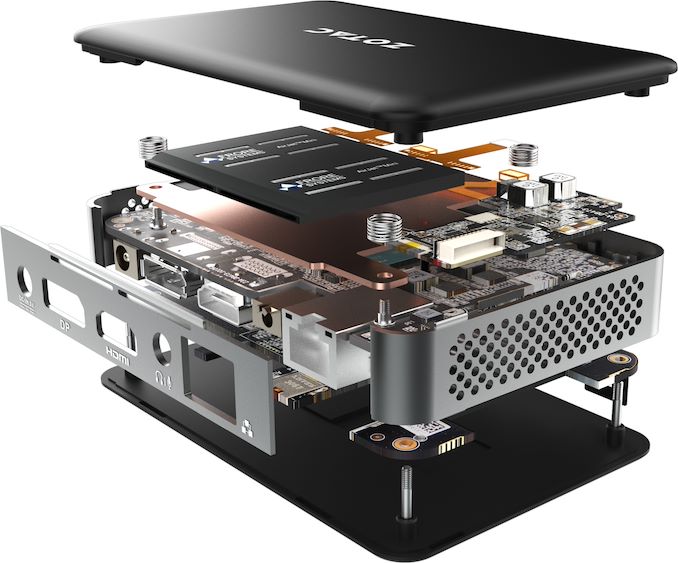
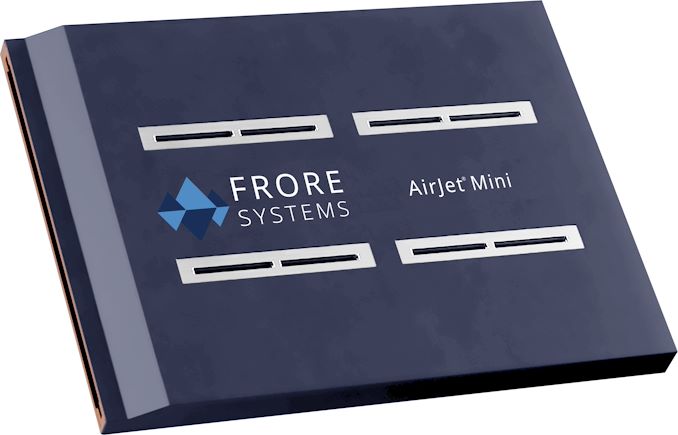
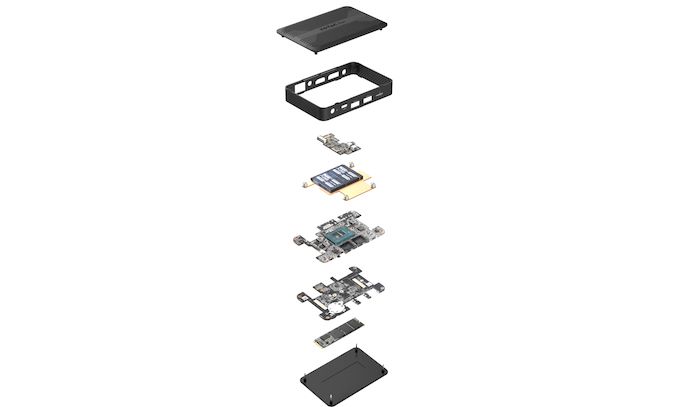

 Quote
Quote
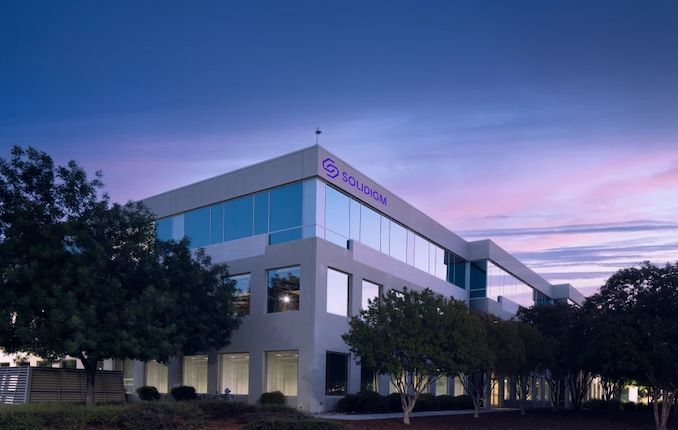

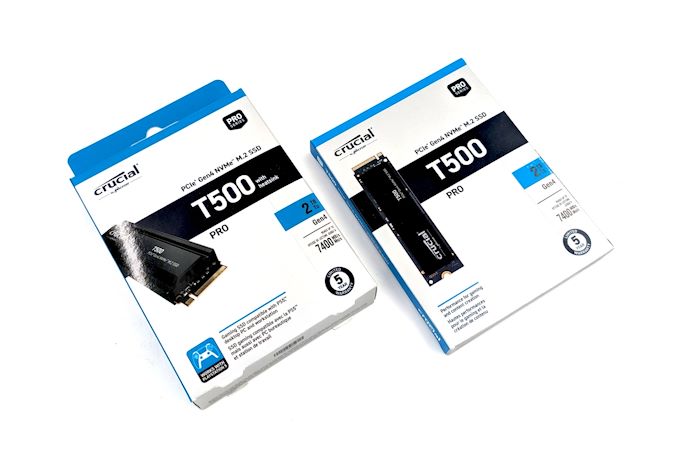
















Bookmarks